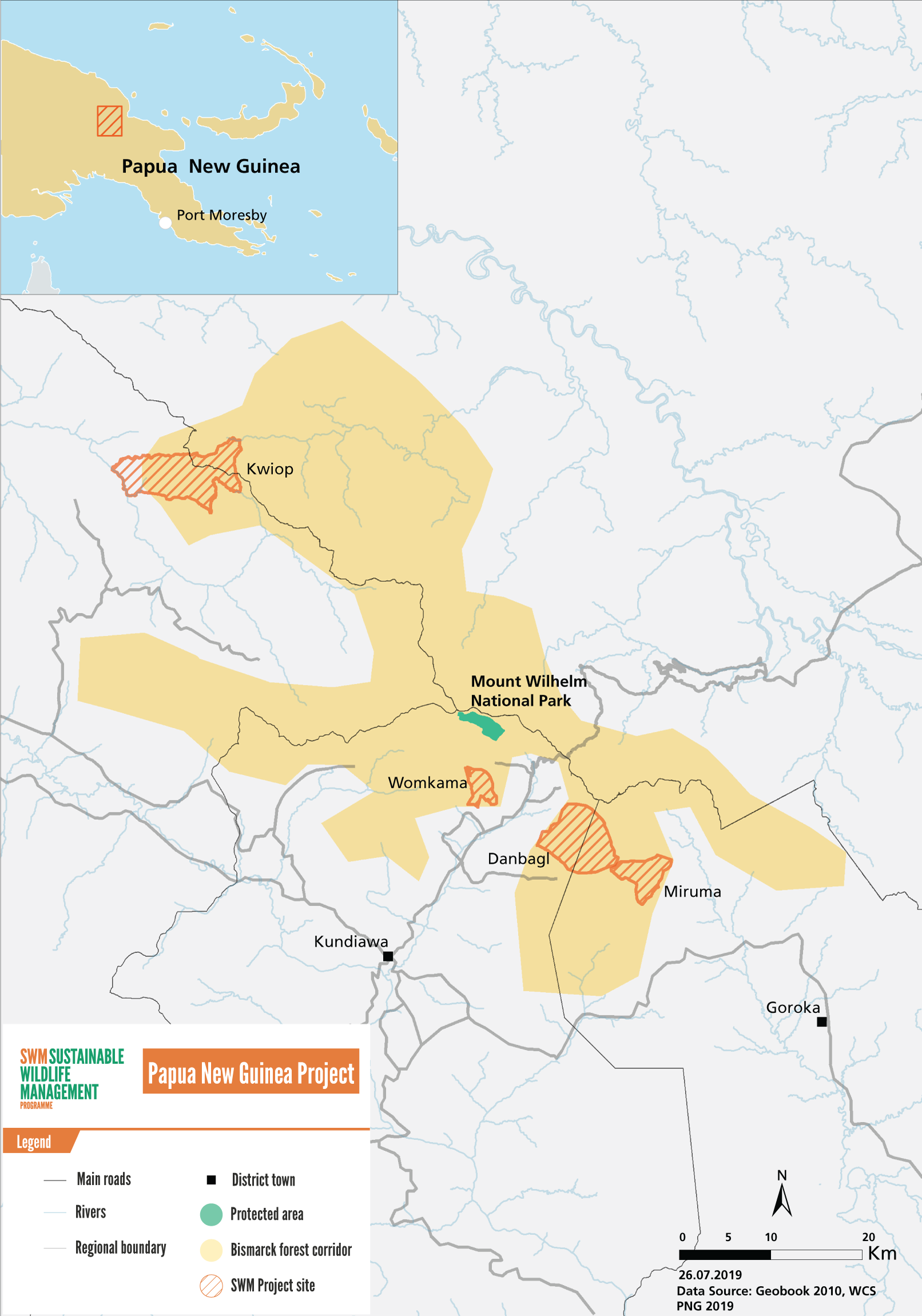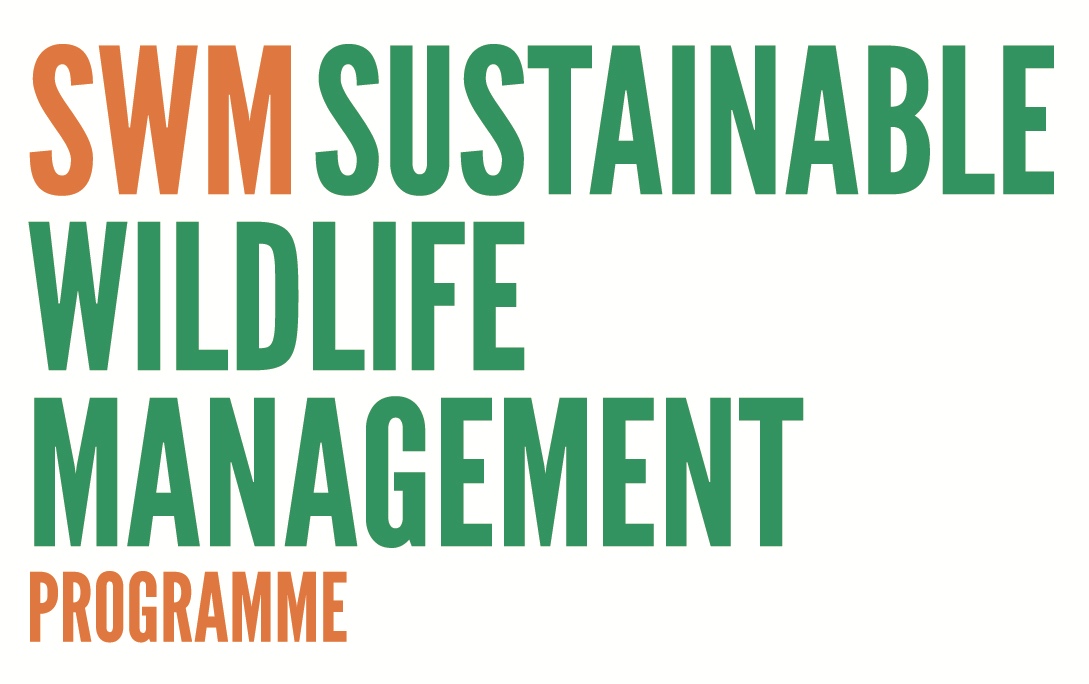The SWM activities in Papua New Guinea
Papua New Guinea
 © WCS/Elodie Van Lierde
© WCS/Elodie Van Lierde
SWM PROJECT
The Bismarck Forest Corridor is one of the most biodiverse regions in the world, with many endemic species. It is also an area with a high density of people. Wildlife is an important source of food as well as feathers and fur for traditional costumes. The increasing scarcity of wildlife is a growing concern for indigenous and rural communities in the region.
The SWM Programme is establishing community-led wildlife management initiatives, including community tree nurseries, to address this challenge. The SWM activities in Papua New Guinea are coordinated by the Wildlife Conservation Society with the national Conservation and Environment Protection Authority. They are being developed with local indigenous communities in Chimbu, Eastern Highlands and Jiwaka provinces and are supported by the provincial and district authorities responsible for wildlife management and animal production.
DID YOU KNOW?
- The Bismark Forest Corridor contains an astonishing 200,000 ha of contiguous intact forest (find out more here).
- The SWM Programme has facilitated two voluntary legal agreements between the clans (Conservation Deeds), thus creating a community conservation area of over 3 500 ha in Kwiop and of 2 450 ha in Miruma (read the story here).
- Community-based organizations have received technical training in how to strengthen their capacities to sustainably manage their natural resources. This includes the training of 30 community rangers to monitor the newly created conservation areas (read the story here).
- The SWM Programme is supporting community nurseries, which have produced more than 10,000 fruit trees and reduced deforestation.


